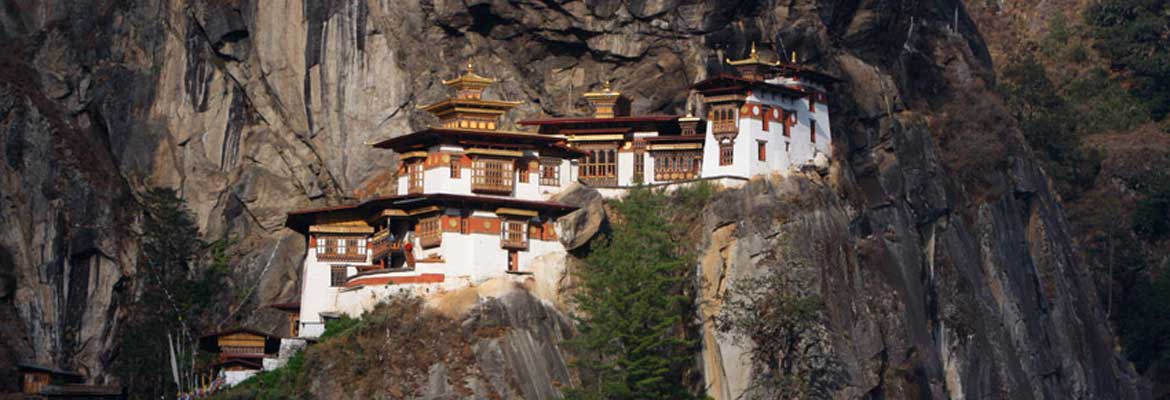
Tiger Nest (Paro Taktshang)
Overview
10 Kilometers toward the north of paro, 3120 meters above sea level on the side of the upper paro valley, the temple of paro Taktshang hangs on the cliff, by the sheer force of faith alone. Paro Taktshang is one of the wonderful and significant hiking places not only for foreigners but also for Bhutanese. The unique thing about this temple is its isolation location on the cliff. The path or trail to the Taktshang Monastery is through the pine forest decorated with bright, prayer barrettes symbolizing protection from evil force and providing the positive energy, vitality and good luck. The refined architectural appearance of the Monastery is shaped in the best traditions of Buddhist. The complex is white with golden roof. Paro Taktshang Monastery consists of the 4 main temples and several dwellings. All temples are interconnected by the staircases with step curved into the rock. Almost every complex of temples of the monastery has a balcony with a breathtaking view of the surrounding area. The interior design of the temple impresses with its luxury beauty: gold plated dome and flickering lights that are illuminating golden idols. In the hall of Thousand Buddha, which is curved into the rock, a large statue of a tiger is located. The tiger is respected as the symbol of Paro Taktshang, because of the legend, according to which the location of the Monastery was chosen by a tigress. The tigress brought here on her back the founder of Bhutan’s Buddhism Guru Padmasambhava. According to the history, in 8 th century, Guru Rimpoche came on the tigress from Tibet and landed at the present location of the temple. Guru Rinpoche mediated in the cave at the location. Therefore, the temple was built on the location and popularly called by name “Paro Taktshang”. Translation (Tiger Nest). The history of Paro Taktshang dates back to the Guru Rinpochoe time and it reveals why Paro Taktshang is one of the most important and significant monastery in Bhutan. There are eight caves in the monastery: four of them are comparatively easy to access. The cave where Padmasambhava is believed to have entered first, on the back of the tiger, is known as the “Tholu Phuk” cave and the one where he meditates is known as the “Pel Phuk”.
